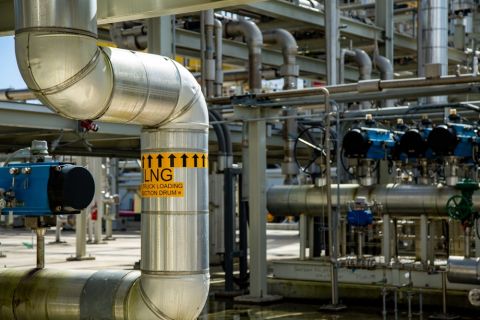The Louisiana coast is a highly productive and prospective area, by areal extent as much as by actual output. It spans 7,721 statute tidal miles and nine parishes, from Cameron to St. Bernard. Thanks to this 3.4-million-acre shoreline, Louisiana ranks third among the states in natural gas production and fourth in crude oil production on offshore tracts. For the last five years, Chevron USA Inc. has ranked as the top producer, operating more than 15% of the successful wells. Other active firms include Amerada Hess Corp., LLOG Exploration Co. and Ocean Energy Inc. The deepest well, drilled by Texaco in the South Timbalier area, reached a total depth of 20,806 feet. During this same time frame, wells in the Bay Marchand area have produced the most oil and gas. With smaller independents now joining the majors in working the federal offshore, interest in state acreage may drop. However, independents such as Spinnaker Exploration Co. continue to explore in state waters. That firm's recent wells at its "Goose" prospect helped it post a 130% increase in fourth-quarter earnings and a 26% increase in fourth-quarter production. During the last five years, an average of 282 state offshore leases were filed per year. The most active year was 1998, when 345 leases were filed. Activity dropped precipitously to 214 leases the following year, but was steadily rebounding until September, 2001. The parishes of Plaquemines and St. Bernard enjoyed the most popularity, with activity concentrated in the Chandeleur Sound, Breton Sound and South Pass areas. Permitting has remained steady for the last five years, with an average of 55 permits filed per year with the DNR. The exception was 2000, when permits jumped 43%. Of the total permits issued since 1998, 9.5% were not drilled. Likewise, offshore completions have remained steady, with no marked fluctuations in activity. Of the 756 completions filed with the state during the previous five years, 71% were successful. The Louisiana Department of Natural Resources categorizes offshore tracts as those which lie seaward of the coastline, but landward of the survey line lying three nautical miles from the Louisiana coastline. Each boundary was determined by the report of the Special Master and set out by a judgment decree in June 1975 by the U.S. Supreme Court. State leases on offshore tracts carry a maximum of five years for the primary term.
Recommended Reading
Battalion in Compliance with NYSE American after 2023 Meeting
2024-02-13 - Previously, Battalion Oil was not in compliance with the NYSE after failing to hold an annual meeting of stockholders during the fiscal year ending Dec. 31.
JMR Services, A-Plus P&A to Merge Companies
2024-03-05 - The combined organization will operate under JMR Services and aims to become the largest pure-play plug and abandonment company in the nation.
New Fortress Energy Sells Two Power Plants to Puerto Rico
2024-03-18 - New Fortress Energy sold two power plants to the Puerto Rico Electric Power Authority to provide cleaner and lower cost energy to the island.
Tellurian Executive Chairman ‘Encouraged’ by Progress
2024-03-18 - Tellurian announced new personnel assignments as the company continues to recover from a turbulent 2023.
Kissler: OPEC+ Likely to Buoy Crude Prices—At Least Somewhat
2024-03-18 - By keeping its voluntary production cuts, OPEC+ is sending a clear signal that oil prices need to be sustainable for both producers and consumers.





